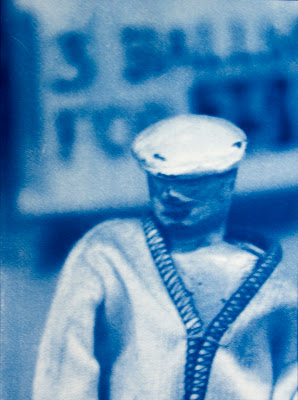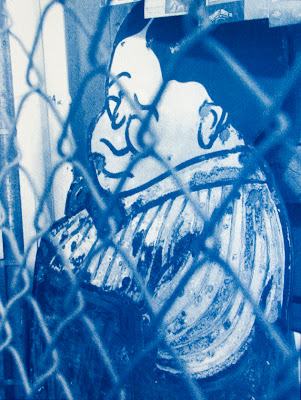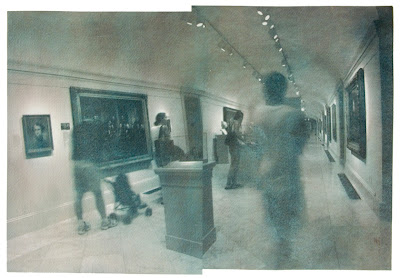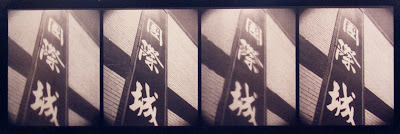The process of gum bichromate printing is easy to understand. Gum Arabic is mixed with watercolor paint. This is in turn mixed with ammonium or potassium dichromate. Adding the dichromate causes the gum arabic to begin to harden. This hardening is proportional to exposure to ultraviolet light. So, if you take a mixture of gum arabic, watercolor paint, and a dichromate sensitizer, paint it onto a piece of paper, dry it, and contact print it, you end up with an image in whatever color of paint you used. A very brief discussion of the process can be found here.
Any color of watercolor paint will work for a gum print, but what many people choose to do is approximate a full-color image by creating CMYK or RGB negative separations and printing each one in the appropriate color. The results won’t have accurate color, but will be close enough to provide interesting results. Negative separations are easy to do in Photoshop, and can be printed on a good inkjet printer using good quality transparency film.
I’ll discuss the difficulties I’m having with creating transfer curves and other technical issues in my next post. For now, here’s some photos taken while I was making a gum print, which will give you an idea of how it works.

First, paper is cut, preshrunk in hot water, dried, and sized. After sizing the print is coated with a sensitizer solution. In this photo I’m adding a premixed gum arabic/paint mixture to a a solution of potassium dichromate to create the sensitizer.

The mixed solution is painted onto a piece of paper. You can see from the photo that I have already printed other color layers on this print.

After coating, a clean brush is used to smooth out the gum solution on the paper. This ensures a more even exposure. The sensitized paper is then dried.

The negative is put into exact registration with the existing image and taped into place. If it is even slightly out of registration the image will turn out blurry.

The print is placed into a printing frame and exposed to ultraviolet light. I made my own exposure unit which uses UV fluorescent bulbs and a commercially made printing frame.

After exposure, the print is soaked face down in a tray of water until it clears. This could take a few minutes, or several hours.
Each 3 color print takes at least five days to complete. First, cut sheets of paper need to be presoaked. Because the paper will be put into several water baths and allowed to dry between them, it has to be presoaked to allow the paper to shrink. Failure to do so will result in negatives that do not register correctly.
Secondly, the presoaked paper must be sized. There are several sizing methods available. I’m using gesso diluted 1:4 as a size, mainly because it’s quick and easy. It still has to dry overnight, however.
Once your paper is preshrunk and sized, each color layer takes a full day. Development can take hours, and the paper must be completely dry before adding the next layer. Given this, it’s easy to see how this process is taking weeks of testing. I’m still printing in other processes while doing gum prints, so I am getting plenty of wok made.
In m next post, I’ll show some test gum prints and discuss what is going well, and also not so well.














